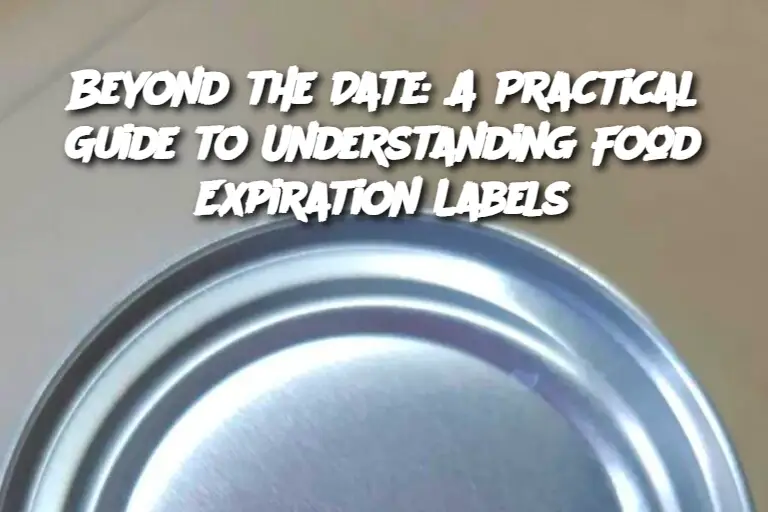ADVERTISEMENT
Introduction
Standing in front of your fridge, you see a yogurt container with yesterday’s date stamped on it. Should you toss it? The confusion around food expiration dates is common and can lead to unnecessary waste or—worse—consuming spoiled food. But not all expiration dates mean the same thing, and not all food past the date is bad. This guide breaks down what food expiration dates really mean, how to interpret them safely, and tips for minimizing food waste while maximizing freshness.
Ingredients:
This isn’t a cooking recipe, but if we had to list “ingredients” for this topic, they’d be:
A basic understanding of expiration date types
Common food items with different shelf lives
Food safety best practices
Smart storage methods
Preparation:
Let’s "prepare" your food knowledge by breaking down the types of food labels:
"Best By" or "Best If Used By": This date indicates when the product will be at its best flavor or quality. It’s not about safety. Most food is still safe to consume after this date if stored properly.
"Sell By": This tells retailers how long to display the product. It’s a guide for stock rotation—not a safety deadline for consumers.
"Use By": This is the closest thing to an expiration date. It's the manufacturer's estimate of when the product is no longer at peak quality. For perishable items like meat or dairy, it's safest to follow this date closely.
"Freeze By": Suggests when a product should be frozen to maintain optimal quality.
Serving and Storage Tips:
Dairy Products: Often good 5–7 days past the “sell by” date if unopened and properly refrigerated. Smell and texture are good indicators.
Eggs: Typically safe 3–5 weeks after purchase if refrigerated. A float test in water can help—if the egg sinks, it’s usually fine.
Canned Goods: These can last years if stored in a cool, dry place. Watch for rust, dents, or bulging—signs the contents may be unsafe.
Fresh Produce: Doesn’t always have a date. Use visual cues and touch. If it’s mushy, moldy, or smells sour, compost it.
Bread: Store in a cool, dry area and consider freezing if you won’t finish it soon. Mold is the main indicator it’s gone bad.
Variations:
ADVERTISEMENT
